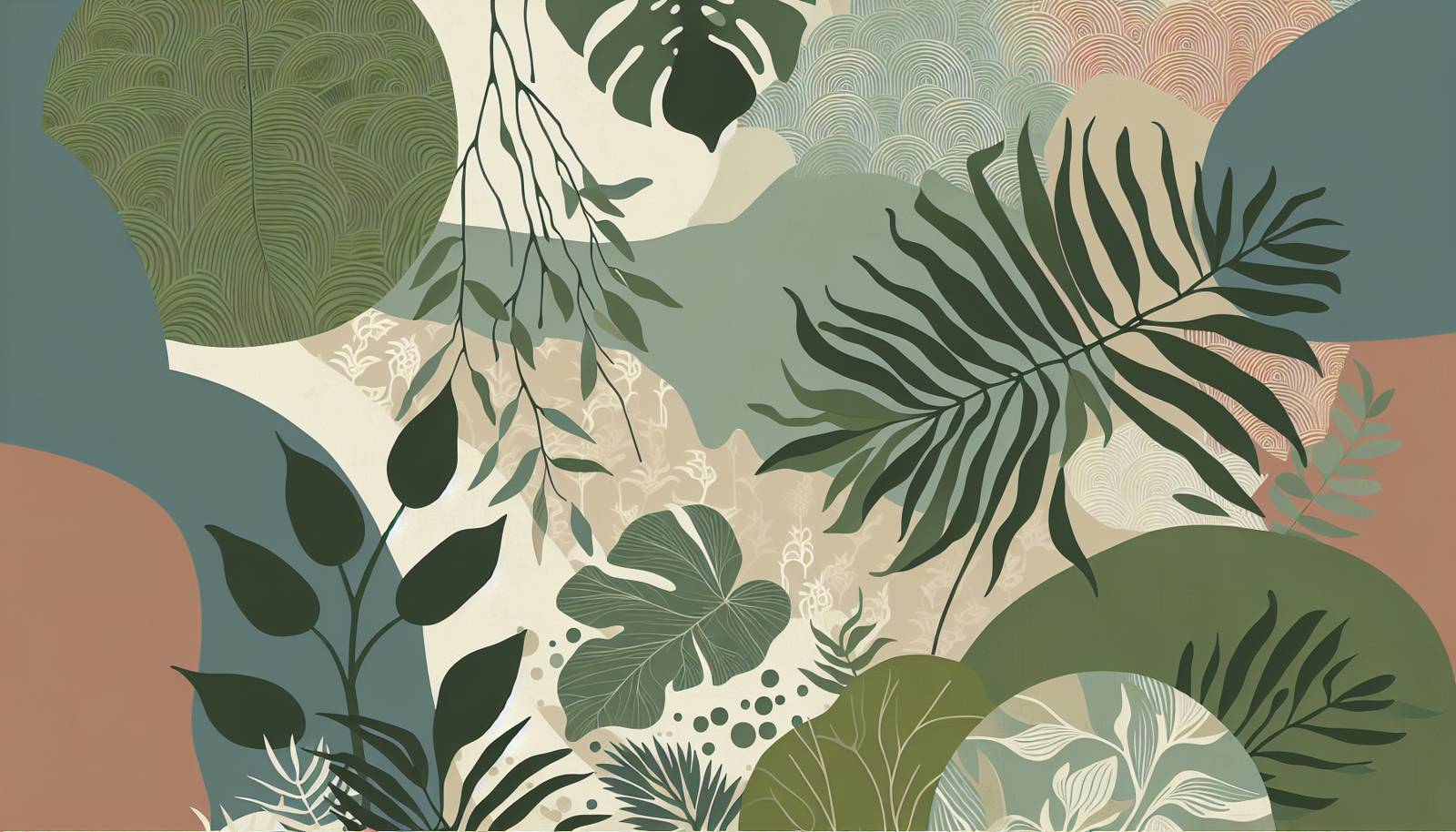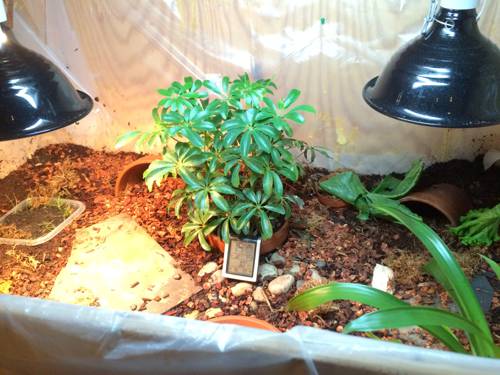
FAQ About Indoor Plant Native Habitats

What are the native habitats of common indoor plants like peace lilies and snake plants?
Peace lilies (Spathiphyllum species) are native to tropical regions of the Americas and Southeast Asia, where they thrive in warm, humid environments with indirect light. Snake plants (Sansevieria species), on the other hand, are native to West Africa, particularly in regions like Nigeria and Congo, where they grow in arid conditions with sporadic rainfall. Understanding these habitats can help recreate similar conditions indoors by ensuring appropriate light, humidity, and watering routines.

How can I recreate the natural habitat of a ficus tree indoors?
Ficus trees, such as Ficus benjamina, are native to tropical regions in Asia and Australia. They prefer warm temperatures, high humidity, and plenty of indirect light. To recreate these conditions indoors, keep your ficus tree near a bright window but out of direct sunlight, maintain room temperatures between 65-75°F (18-24°C), and use a humidifier or mist the leaves regularly to increase humidity.

What is the natural habitat of a monstera plant?
Monstera plants, such as Monstera deliciosa, are native to the tropical rainforests of Central and South America. They grow under the canopy of trees in high humidity environments and receive filtered sunlight. To mimic these conditions, place your monstera in a spot with bright, indirect light, maintain high humidity by misting the leaves or placing the pot on a humidity tray, and water the plant regularly to keep the soil moist but not waterlogged.

Where do pothos plants naturally grow, and how can I simulate this at home?
Pothos plants (Epipremnum aureum) are native to the Solomon Islands in the South Pacific. They grow in shaded forest areas with high humidity. To simulate their natural habitat, place pothos in a well-lit area with indirect light, keep the soil consistently moist but not soggy, and ensure high humidity by misting the leaves or using a humidity tray.

What conditions do native habitats of ferns provide, and how can I replicate them indoors?
Ferns are typically found in shady and moist environments such as tropical forests or temperate woodlands. They require high humidity, indirect light, and rich, moist soil. To replicate these conditions indoors, place ferns in a spot with filtered light, use a humidifier to maintain high humidity levels, and ensure their soil remains moist at all times.

In what environment do orchids naturally thrive?
Orchids are found in a variety of habitats, but most indoor varieties like Phalaenopsis are native to tropical and subtropical regions. They often grow as epiphytes on trees, benefiting from dappled sunlight and high humidity. To recreate this environment indoors, place orchids in indirect light, maintain humidity around 50-70%, and water them sparingly to avoid root rot.

How can I imitate the native habitat of aloe vera indoors?
Aloe vera plants are native to arid regions of the Arabian Peninsula, and they have adapted to thrive in dry, hot climates. To imitate these conditions indoors, place aloe vera in direct sunlight, use well-draining soil, and water sparingly, allowing the soil to dry out completely between waterings.

What is the natural environment of a rubber plant, and how can it be mimicked indoors?
Rubber plants (Ficus elastica) are native to the tropical rainforests of Southeast Asia. They thrive in warm, humid conditions with indirect light. To mimic this, locate the rubber plant in a bright room with indirect sunlight, maintain temperatures between 65-85°F (18-29°C), and increase humidity by misting or using a pebble tray.

Where do ZZ plants naturally grow, and what indoor conditions do they prefer?
ZZ plants (Zamioculcas zamiifolia) are native to Eastern Africa, including Kenya and Tanzania, where they grow in dry grasslands and forests. They prefer low to moderate light conditions, making them ideal for areas with indirect light indoors. To maintain ideal conditions, allow the soil to dry out completely between waterings and keep them out of direct sunlight.

What are the native growing conditions for spider plants?
Spider plants (Chlorophytum comosum) are native to tropical and Southern Africa, where they grow in shaded, humid environments. To recreate these conditions indoors, place spider plants in bright, indirect sunlight, maintain a humid environment, and keep the soil moderately moist.

How can I provide a natural habitat for jade plants indoors?
Jade plants (Crassula ovata) are native to South Africa and Mozambique, thriving in arid shrubland areas. Indoors, they prefer bright light and infrequent watering. To provide a similar habitat, place jade plants in a spot with plenty of sunlight, such as a south-facing window, and allow the soil to dry thoroughly between watering.

What is the typical environment for a bromeliad, and how can it be simulated indoors?
Bromeliads are commonly found in tropical rainforests of Central and South America, thriving in humid conditions with filtered light. To simulate these conditions indoors, place bromeliads in indirect light, ensure high humidity by misting regularly or using a pebble tray, and water them by filling the central cup of the plant with water.

Where do calatheas naturally grow, and how can I create similar conditions at home?
Calatheas are native to tropical regions of the Americas, particularly Brazil's rainforests. They prefer high humidity, warm temperatures, and indirect light. At home, use a humidifier to maintain humidity, keep them in a warm room, and place them in a location with filtered light, such as near a north-facing window.

What are the natural growing conditions for cacti, and how can these be recreated indoors?
Cacti are native primarily to desert regions in the Americas, where they experience intense sunlight, low humidity, and sandy soil. To mimic these conditions indoors, place cacti in a place with abundant sunlight, use a well-draining soil mix, and water them infrequently, allowing the soil to dry completely between waterings.

How can I ensure my indoor bamboo plant thrives by recreating its natural habitat?
Indoor bamboo plants, often grown as 'lucky bamboo' (Dracaena sanderiana), are native to the dense, shaded rainforests of Central Africa. They prefer indirect light and high humidity. Ensure your bamboo plant thrives indoors by placing it in low to medium indirect light conditions and keeping the soil or water levels consistent and fresh.

What is the natural habitat of a croton plant, and how can it be recreated indoors?
Croton plants (Codiaeum variegatum) are native to Indonesia and Malaysia, where they thrive in forests with warm temperatures and high humidity. To recreate this indoors, place crotons in a location with bright, indirect light, maintain a warm environment (above 60°F or 16°C), and ensure high humidity levels, possibly using a humidifier or by misting the leaves.

What are the typical conditions in the native habitat of a philodendron?
Philodendrons are native to tropical rainforests in Central and South America. They thrive in humid, warm environments with filtered sunlight. To simulate these conditions at home, place philodendrons in bright, indirect light, maintain soil moisture without waterlogging, and mist them regularly to increase humidity.

How can I mimic the natural environment of ivy plants indoors?
Ivy plants, like English ivy (Hedera helix), are native to Europe and Western Asia, where they often grow in woodland areas with moderate light and cooler temperatures. To mimic their natural habitat indoors, place ivy plants in a well-lit area away from direct sunlight, keep them cool, and ensure their soil is well-draining and kept slightly moist.

Where are begonias naturally found, and how should their environment be simulated indoors?
Begonias are native to tropical and subtropical regions, often growing in shaded, humid environments under trees. To simulate this indoors, provide begonias with indirect light, maintain a moderate to high humidity environment, and ensure the soil is moist but well-draining to prevent waterlogging.

What natural conditions do palm plants require, and how can they be sustained indoors?
Palm plants, such as the Areca palm, are native to tropical and subtropical regions of the world. They thrive in warm, humid conditions with indirect sunlight. Indoors, place palm plants in a bright room with filtered light, maintain room temperature between 65-75°F (18-24°C), and use a humidifier or mist the leaves regularly to keep humidity levels high.
